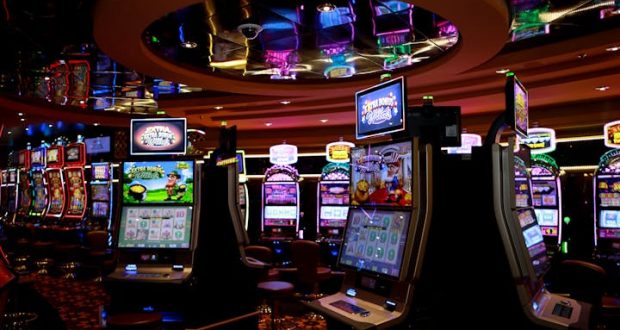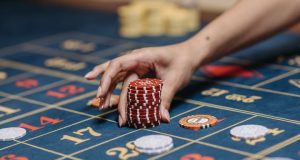In the fast-paced digital world, attention is gold and loyalty is the crown jewel. Every brand wants to capture the hearts, minds, and habits of its audience — to become the name people reach for without thinking twice. But how do you build a brand that’s not just memorable, but magnetic?
Look no further than one of the world’s most compelling entertainment industries — the casino world. More specifically, the artfully engineered world of slot games. These colourful, high-energy experiences are designed to hold attention, build anticipation, and keep players coming back for more. The truth is, successful brands and successful slot games operate on the same psychological wavelength. Both rely on emotion, repetition, design, and reward to create lasting bonds.
Think about it: when you see the spinning reels, the vibrant lights, and the possibility of hitting the jackpot, your brain lights up with excitement. The same thing happens when a customer sees your logo and instantly feels trust, joy, or anticipation. Branding, done right, is a reward loop — and just like in the gaming world, it’s addictive in the best possible way.
And speaking of excitement, there’s no better illustration of this principle than joka casino online casino Australia real money, where design, psychology, and user experience merge seamlessly to create pure engagement. That combination — the blend of trust, thrill, and anticipation — is exactly what great branding achieves.
What Makes Slot Games So Addictive — and What Brands Can Learn
Before diving into the world of branding, let’s look at why slot games are so effective at holding people’s attention. These aren’t just random spins and flashing lights; they’re psychological masterpieces built on decades of research.
The secret lies in their reward systems. Slot games tap into the same parts of the human brain that crave progress, surprise, and satisfaction. Every spin offers the potential of a reward, and that potential keeps players engaged — even when they don’t win every time.
Now think about your favourite brand. Chances are, it gives you that same feeling. Whether it’s the satisfying click of an Apple product, the smooth unboxing of a luxury purchase, or the way a certain coffee chain makes you feel recognised every morning — the emotion is the same. It’s the thrill of consistency mixed with anticipation for what’s next.
Smart businesses understand this connection and build their brands around experiences, not just products. They know that to create loyalty, you have to keep people emotionally invested — just like the best slot machines do.
The Psychology of Brand Addiction
At the core of every addictive experience is emotion. People don’t buy products; they buy feelings. They buy the excitement of a new gadget, the comfort of a familiar logo, the confidence of being part of something bigger.
Slot games master this psychology through three primary levers: reward anticipation, visual stimulation, and storytelling. Brands can — and should — do the same.
1. Reward Anticipation
Players don’t keep spinning because they win every time; they spin because the possibility of winning feels good. The anticipation itself is the reward. In branding, anticipation can be built through sneak peeks, limited releases, and surprise offers. The mystery and excitement of what’s next keeps customers emotionally hooked.
2. Visual Stimulation
Slot games use colour, sound, and motion to capture attention. A strong brand identity does the same. Think of Coca-Cola’s red, Tiffany’s blue, or McDonald’s golden arches. Consistent, recognisable visuals aren’t just aesthetic — they’re neurological triggers that activate memory and trust.
3. Storytelling
Every successful slot has a story. Whether it’s a journey through ancient Egypt or a magical forest, there’s always a narrative pulling the player in. Brands that tell stories — authentic, ongoing ones — connect far deeper than those that simply sell. Story builds community, identity, and emotional value.
The Slot Game Formula: A Blueprint for Branding Success
Slot games aren’t designed by accident. They’re crafted using precise psychological principles that guide behaviour. And those principles double as a formula for building irresistible brands.
Let’s break that formula down:
1. Visual Identity that Pops
When you walk into a casino, what grabs you first? The visuals. Slot machines scream for attention — with vibrant colours, animated reels, and dynamic icons that create instant recognition.
Your brand needs that same magnetism.
- Colours: Choose a palette that evokes emotion. Blues suggest trust, reds evoke passion, golds imply luxury.
- Typography: The font should match your tone — playful, elegant, or bold.
- Logo: Keep it simple, symbolic, and scalable. Your audience should recognise it even from a distance or in a thumbnail.
Visual identity isn’t decoration; it’s a silent salesman working 24/7.
2. Reward Loops that Keep Audiences Coming Back
Slot games master the art of reward loops — small doses of pleasure at regular intervals. This keeps players spinning. In business, reward loops can take many forms:
- Loyalty points for repeat purchases
- Exclusive rewards for engagement
- Appreciation messages or surprise upgrades
A great example? Starbucks’ Rewards program, where each purchase builds toward a treat. It’s the same psychology as collecting symbols for a bonus round — progress equals pleasure.
3. Consistency is the True Jackpot
The best slot games are consistent. The sounds, visuals, and experiences align perfectly. There are no surprises — except the good kind. Brands that maintain consistency across every touchpoint create comfort and reliability.
From packaging to tone of voice to customer service, consistency builds trust. And trust, in marketing, is worth more than gold.
4. Create Anticipation and Delight
Think of a bonus round in a slot game — unexpected, thrilling, and full of potential. That’s the kind of experience customers crave from brands.
Launch new features, introduce mystery drops, or send surprise gifts to loyal customers. When people feel like something exciting could happen at any moment, they stay engaged.
Brands like Apple and Nike have perfected this with their product launches — every reveal feels like a jackpot moment.
5. Keep It Simple but Rewarding
Slot games are designed for clarity. Spin, win, repeat. No confusion, no clutter. That simplicity is key to their success.
Brands often overcomplicate things — too many offers, too much messaging, too many steps. Keep your brand interactions simple, intuitive, and satisfying. If it takes more than three clicks or three seconds to understand your offer, you’ve lost your player.
The Role of Emotion: Turning Customers into Fans
Emotion is the currency of branding. People remember how you make them feel, not what you tell them. Slot games excel at this — they transform ordinary actions into emotional experiences.
Every spin carries hope, excitement, and suspense. Great brands replicate this emotional rhythm through storytelling, visuals, and customer interaction.
When Tesla fans line up overnight for a car they haven’t even seen, or gamers queue for the latest console drop, that’s emotional branding at work. It’s not about logic — it’s about love, anticipation, and identity.
Building the Brand Experience: The Casino of Emotion
Imagine walking into a luxury casino. The lights, the music, the crowd — everything is meticulously designed to evoke feeling. That’s how your brand should operate. Every touchpoint — from social media posts to packaging to customer support — must feel like part of a unified, emotionally charged experience.
Slot games are immersive because they control the environment. Successful brands do the same. They build ecosystems where every interaction reinforces the same feeling — trust, joy, excitement, or exclusivity.
Amazon, for instance, builds its experience around convenience. Everything from the homepage layout to delivery notifications reinforces that single brand promise: easy and fast.
Branding Lessons Straight from the Reels
Let’s summarise the biggest lessons brands can steal from slot game psychology:
- Use colour and sound strategically. Sensory cues create emotional associations.
- Deliver instant gratification. Give customers reasons to smile now, not later.
- Introduce variability. Keep them guessing with new offers, content, or products.
- Visualise progress. Loyalty programs or tier systems mimic the satisfaction of levelling up.
- Build community. Multiplayer slot tournaments thrive because players love shared experiences. Bring that same community energy to your brand.
From Casinos to Companies: Real-World Examples
🔹 Coca-Cola: The Classic Loop
Every time you see a Coke ad, the message is the same — happiness, togetherness, and refreshment. That consistency creates trust and instant recognition.
🔹 Nike: Progress and Achievement
“Just Do It” isn’t just a slogan; it’s a mindset. Nike taps into the psychology of progress, rewarding customers for effort and identity. It’s like unlocking achievements in a game.
🔹 Joka Casino: Thrill and Trust
Brands like Joka Casino don’t just sell games; they sell emotion. The anticipation of the spin, the trust in fair play, and the joy of real rewards mirror what every business should aim to create a sense of fun with value.
Retention: Keeping the Player in the Game
In casinos, the biggest challenge isn’t getting someone to play — it’s getting them to stay. The same is true in business.
Retention is the jackpot metric. Loyal customers are worth five times more than new ones, and repeat buyers spend more. Gamification can help here — by turning engagement into a rewarding cycle.
Think of your business as a game where every interaction earns points toward a bigger prize. Whether that’s discounts, status, or exclusive access, the goal is to make staying as rewarding as starting.
The Science of Brand Loyalty
Loyalty isn’t about discounts or deals it’s about emotional resonance. Neuroscientists have found that brand love activates the same areas of the brain as romantic attachment. People literally fall in love with brands that make them feel good.
The most powerful way to build that love? Consistent positive reinforcement. Every email, every touchpoint, every experience should make customers feel like they’ve “won” something — even if it’s just a smile.
That’s how slot games work. And that’s how great branding keeps customers coming back for another spin.
The Brand Jackpot Framework
If you want to make your business as addictive as a slot game, use this five-step framework:
- Set the Stage: Define your emotional territory — what should your brand make people feel?
- Design the Experience: Create a consistent look, sound, and message that evokes that emotion.
- Add Rewards: Find ways to recognise and reward customers at every stage.
- Build Anticipation: Introduce unpredictability and excitement.
- Keep Spinning: Evolve your brand story, visuals, and engagement loops regularly.
The Future of Branding: Entertainment Meets Engagement
In the next decade, branding will become even more immersive. Businesses will merge marketing, entertainment, and interactivity into a single seamless experience. The brands that win won’t be the ones shouting the loudest — they’ll be the ones playing the smartest.
AI-driven personalisation, AR-based experiences, and gamified customer journeys will make branding feel like playing a slot game — dynamic, personal, and fun.
Just like players return to their favourite slots for the experience, not just the win, customers will return to brands that make them feel something.
The Final Spin: Branding Is Behaviour
At its core, branding is about behaviour — how people think, feel, and act when they encounter your business. The most successful brands create emotional loops that mimic the thrill of gaming: anticipation, reward, satisfaction, and repeat.
By taking cues from slot games — with their precision design, clear goals, and constant engagement — businesses can transform passive audiences into loyal players.
Branding isn’t luck. It’s strategy. It’s the perfect blend of art and psychology — and when done right, it’s every bit as addictive as watching the reels spin toward a jackpot.
So the next time you think about branding, don’t just ask how to sell your product. Ask:
“How can I make my audience feel like they’ve just hit the jackpot?”
Because that’s the real secret when customers feel rewarded, they’ll keep playing your game.
 Trip Alertz For Jetsetters, By Jetsetters
Trip Alertz For Jetsetters, By Jetsetters


